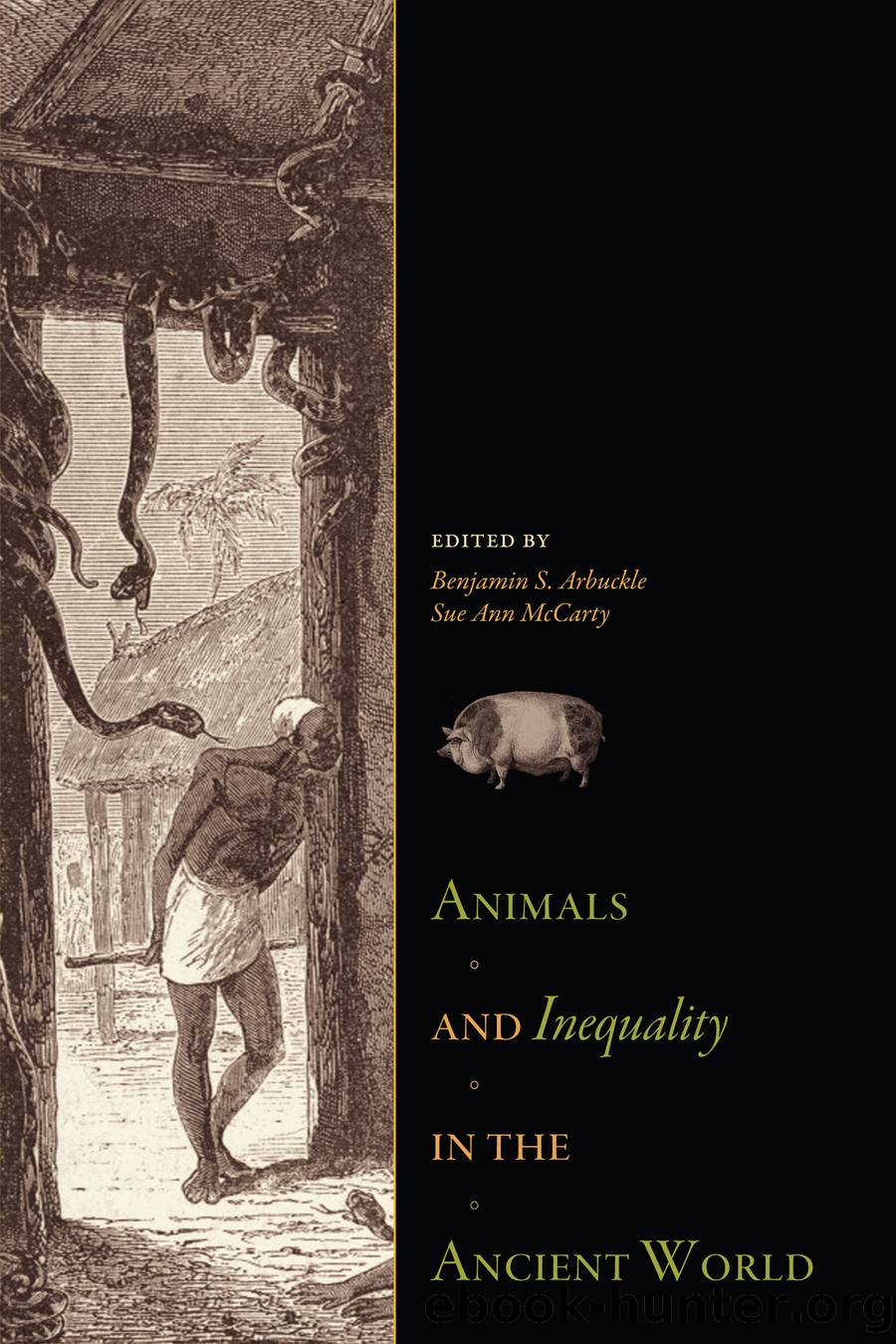Animals and Inequality in the Ancient World by Benjamin S. Arbuckle & Sue Ann McCarty

Author:Benjamin S. Arbuckle & Sue Ann McCarty
Language: eng
Format: epub
ISBN: 978-1-60732-286-3
Publisher: © 2014 by University Press of Colorado
Published: 2014-12-24T00:00:00+00:00
Social Change and Animal Exploitation in the Middle Neolithic: Final Remarks
The Racot settlement is an exemplary case that makes it possible to capture the changing nature of human-animals relations following abandonment of the stable world of early farmers in the North European Plain in the second half of the sixth millennium BC. Animals were integral components of the significant social and economic transformations that occurred in this period. The most important transformation, with far-reaching consequences, was the demise of the communal organization in early farming groups that was focused upon monumental longhouses (e.g., Milisauskas 1986:215â218). Instead, in the fifth millennium BC a number of small coexisting communities emerged within intense communication networks.
Social changes in this period were characterized by small-scale modifications and transformations of the early farming tradition. The changes were uneven and highly localized, and their dynamics varied. References to the tradition of early farmers remained strong and were exercised in many domains. Some of these practices were identical to the LBK, but in the majority of cases they appeared in a transformed and modified form.
These new Lengyel communities were marked by strongly articulated individual and kinship identities, and their mutual relations were less closely tied than in the preceding period. Household organization began to dominate (e.g., Grygiel 1986; Marciniak 2000, 2005, 2008a). The gradual increase in household autonomy challenged the social, ceremonial, and economic foundations of the early Neolithic communities. It developed in the domain of longhouses but eventually contributed to their demise. A longhouse was no longer a monumental structure but began to serve as an ordinary domestic dwelling. Its referential and metaphoric meaning, as in the Early Neolithic, was no longer important to maintain local farming groups.
Food-related practices in the Middle Neolithic also changed. A reference to the Early Neolithic food traditions was certainly more pronounced in newly occupied regions than in the early farming centers, where change was less distinct. As revealed at the Racot settlement, some food traditions remained identical to those in the preceding period but in the course of time began to be transformed and modified. Cattle remained reserved for âspecialâ and public consumption events. The practice of cattle-marrow consumption outside the longhouse in the form of communal feasting hardly changed and was particularly common in the early stage of the Middle Neolithic. As in the Early Neolithic, the debris from these activities was deposited in loam pits not directly associated with the house. Interestingly, pork was eaten in a similarly public way. Towards the end of the Middle Neolithic, consumption of sheep/goats began to dominate. They were prepared for small groups of people inhabiting subsequent buildings but also involved ceremonial consumption, albeit performed in a smaller scale, in the manner similar to that of cattle in earlier phases.
More generally, the Middle Neolithic brought about considerable changes in relations between people and domestic animals. In accord with social changes of the time, Middle Neolithic peoples such as those at Racot began to separate the economic and subsistence practices from the social and symbolic domains so prevalent in the Early Neolithic.
Download
This site does not store any files on its server. We only index and link to content provided by other sites. Please contact the content providers to delete copyright contents if any and email us, we'll remove relevant links or contents immediately.
| Africa | Americas |
| Arctic & Antarctica | Asia |
| Australia & Oceania | Europe |
| Middle East | Russia |
| United States | World |
| Ancient Civilizations | Military |
| Historical Study & Educational Resources |
Never by Ken Follett(2872)
The Man Who Died Twice by Richard Osman(2289)
Machine Learning at Scale with H2O by Gregory Keys | David Whiting(2264)
Fairy Tale by Stephen King(2058)
Will by Will Smith(2032)
Rationality by Steven Pinker(1760)
The Dawn of Everything: A New History of Humanity by David Graeber & David Wengrow(1564)
The Dark Hours by Michael Connelly(1562)
Principles for Dealing With the Changing World Order: Why Nations Succeed and Fail by Ray Dalio(1368)
Friends, Lovers, and the Big Terrible Thing by Matthew Perry(1321)
A Short History of War by Jeremy Black(1295)
HBR's 10 Must Reads 2022 by Harvard Business Review(1251)
Go Tell the Bees That I Am Gone by Diana Gabaldon(1231)
Can't Hurt Me: Master Your Mind and Defy the Odds - Clean Edition by David Goggins(1218)
515945210 by Unknown(1205)
Fear No Evil by James Patterson(1106)
443319537 by Unknown(1069)
Works by Richard Wright(1017)
Going There by Katie Couric(988)
